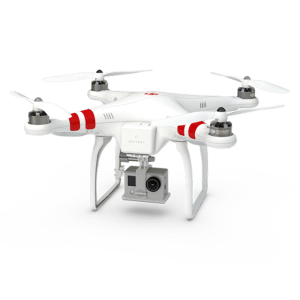The U.S. aviation system faces a growing and increasingly challenging array of threats, including the use of cyber activities, drones, espionage and disease, the Trump administration says in a new strategy for securing the nation's aviation ecosystem.
The new strategy moves beyond the original, which was published in 2007, to "more narrow focus on terrorist groups, criminals and hostile nation states to also include insiders, foreign intelligence activities, and the spread of infectious diseases via air travel," it says.
The "originators of threats" to aviation security, as the National Strategy for Aviation Security calls them, continue to have access to a broad array of capabilities, including chemical, biological, radiological, nuclear and explosive materials, malicious cyber activities, and unmanned aircraft systems (UAS). The 2007 version of the strategy didn't call out cyber as a new and emerging threat.

The popular quadcopter UAV developed by China's DJI. Drones are seen as an emerging threat to aviation security. Photo: DJI
"Emerging threats, including malicious cyber actors, threats from insiders, malicious or reckless use of unmanned aircraft and other Non-Traditional Aviation Technologies, sophisticated explosives, and transnational criminals, pose the greatest challenge to the entire Aviation Ecosystem," says the strategy.
The strategy highlights that criminals have targeted companies in the aviation sector with cyber intrusions for financial crimes and that nation-states have stolen intellectual property from these companies.
Moreover, the increasing dependence of aviation on radio spectrum requires both physical security and cyber security measures, the White House says. The same drones can carry explosives, conduct surveillance, and be used for cyber intrusions of nearby computer networks, it says.
As for UAS, which were called out as a potential threat in the 2007 strategy, the updated document points out that drones have been used to smuggle drugs, weapons and money over the southern border, contraband into prisons, and have been sighted near airports, which could harm manned aircraft.
Unlike the 2007 strategy, the 2019 version doesn't mention the threat of man-portable missile systems to commercial aircraft. Consideration for man-portable air defense systems, called MANPADS, aboard commercial aircraft was frequently discussed after the 9/11 terrorist attacks because of the large number of unaccounted shoulder-fired missiles the U.S. provided to Afghanistan resistance fighters in the 1980s to help them fight troops of the former Soviet Union who were occupying their country.
Combatting the threat will continue to require a coordinated, layered, "whole-of-community" response, the White House says. The strategic actions called for in the strategy are largely the same from 12 years ago and include expanding aviation domain awareness, anticipating threats and assessing vulnerabilities, continuing to integrate security efforts, promoting resiliency, and enhancing international cooperation.
The new strategy, which was released on Wednesday, was signed by President Donald Trump in December.
